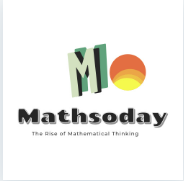Number Chart is fun.
- mathsoday

- May 29, 2023
- 2 min read
Updated: May 30, 2023
All over the world, mathematics educators are trying to make mathematics learning joyful, meaningful and process-oriented so that learners can make sense of whatever they are learning, can apply it and develop mathematical ways of learning. In this direction, NCTM (2000) recommends.
Instructional programs from prekindergarten through grade 12 should enable all students to-
Recognize reasoning- proving as fundamental aspects of mathematics
Make and investigate mathematical conjectures
Develop and evaluate mathematical arguments and proof
Select and use various types of reasoning and methods of proofs
[NCTM Principles and Standards for School Mathematics (2000), p. 56]
This Blog is an initiative in this direction to share collective experience of teaching - learning mathematics and sharing resources that are potentially helpful in effective teaching & learning of mathematics.
An exemplar task based on Numbers chart is presented here as an important mathematical tool for developing key mathematical ideas-
successor- a number 1 less than the given number
Predecessor- a number 1 more than the given number
Addition in 10's
Subtraction in 10's
Exploring number charts could help students in finding number patterns, making arithmetic relationships, and justifying it.
Target Group: This activity is meant for primary grade students.
Description:
Let's take (1-100) number chart,

Ask Students to Choose any number from 1-100 in this chart ______(Say 57)
· Write the number just above it ________(56)___. Their difference = __1_________
· Write the number just below it_________(58)__. Their difference = ___1_______
· Write the number to its immediate right ____(67)____. Their difference = ___10___
· Write the number to its immediate left ___(47)_____. Their difference = ___(10)___
Now ask students to Try it out with other numbers and record your observations.
What can you conclude from this? Did you find any pattern.
1. What Pattern did you find while moving one step above?
2. What Pattern did you find while moving one step below?
3. What Pattern did you find while moving one step towards right?
4. What Pattern did you find while moving one step towards left?
Follow-up Questions:
Note for teachers: Give students opportunity to observe and state the pattern.
Ask them, when the number increased by 1?
When the number decreased by 1?
When the number decreased by 10?
When the number increased by 10?
Does it hold true for any number?
Does it remain same when you move two steps above the number or below the number?
What changes you observed? Etc.
Expected Results of the exploration:
Try to make students identify and state following relationship:
Moving One step above the number means -1
One step below the number means +1
One step to the right of the number means +10
One step to the left of the number means -10
In this way, teachers can encourage children to observe multiple patterns in number chart, identify arithmetic relationships and state them. This activity is meant to experience conjecturing, identifying and stating relationships, and making arguments to justify them. Giving the child first-hand experience to these processes offers them a flavor of mathematics.
Thank you for reading.
Your comments and suggestions will be appreciated.
You can Download worksheets from below.




Really helpful and engaging. Tried with grade 4 students👍